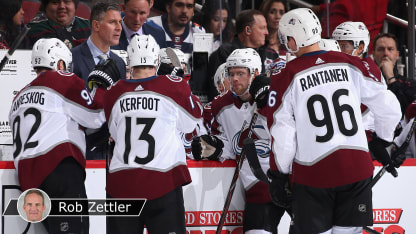Any coach will tell you the game is never far from your mind, even when you're on a break, but part of this break requires you as a coach to start thinking about the upcoming NHL Trade Deadline. That comes into focus now.
The break gives the coach a chance to step away from everything but at the same time give a full evaluation of the team, where it's at and what the needs might be without having his mind clouded by the grind of the schedule, the next practice, the next game or the next road trip.
All of that, the game preparation, the practice preparation, individual video, it all takes up a lot of brain space, a lot of time and a lot of energy amongst the whole staff. The break gives you a little bit of extra brain space to think big picture.
You may say, "OK, we're in this thing and we've got a shot at it, so what do we need?" You start thinking, "If we could have a piece, what should that piece be?"
Of course, everybody wants a high-end forward and a high-end defenseman, but if you can add a piece, what does it look like and what does it do to your team? Last year with the San Jose Sharks, we needed a top-six forward and we were fortunate to get Gustav Nyquist. He helped us get to the Western Conference Final.
You start to have some of those conversations during the break, when you feel like you can focus on them.
A lot of times, it's the coach having those conversations with the general manager and then the coach talking to the staff about those conversations and asking for ideas, thoughts, opinions on if what he and the GM talked about makes sense for the team.
Every team is different.
The St. Louis Blues might be saying, "We're good with what we've got." Maybe another team is saying, "We need to fill this position with some depth in case of injury." And maybe another team is thinking if they should be trading a player away when they may still be in the race.
For example, look at the Pacific Division right now. It's crazy. You've got a first-place team in the Vancouver Canucks with 58 points and the next four teams (Edmonton Oilers, Calgary Flames, Arizona Coyotes and Vegas Golden Knights) each have 57.
You've got a lot of teams going, "Are we in this for real or what are we right now?" That's a very hard thing to determine, but that's why you have to have these conversations. They're important to have both for the immediate future and for the long-term success of your team.


















